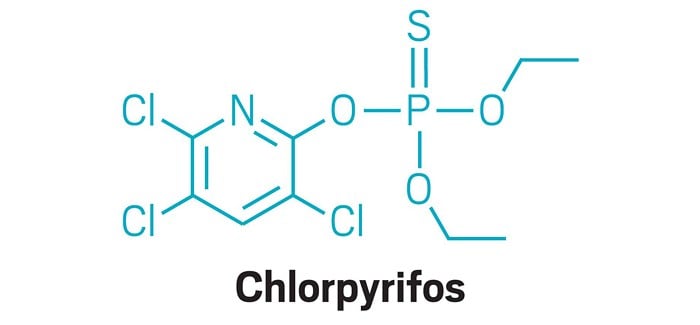Chlorpyrifos
Chlorpyrifos, a pesticide deemed ‘moderately hazardous’ by the World Health Organization, remains widely used in India. Despite bans in over 40 countries, it poses risks to farmers, consumers, and ecosystems. As global delegates prepare for the 2025 Conferences of the Parties to the Basel, Rotterdam, and Stockholm Conventions in Geneva, calls for an immediate ban on chlorpyrifos have intensified. Experts stress the urgency of addressing its health impacts and environmental contamination.
Health Risks of Chlorpyrifos
Chlorpyrifos is linked to severe health issues. Scientific studies indicate its association with neurotoxicity and irreversible brain damage in unborn children. It also poses reproductive risks. The chemical can travel vast distances, contaminating remote ecosystems. This widespread environmental impact raises alarms about its continued use.
International Advocacy for a Ban
Pesticide Action Network (PAN) India advocates for chlorpyrifos to be included under Annex III of the Rotterdam Convention. This inclusion would require prior informed consent for its international trade. PAN India also urges the Stockholm Convention to classify chlorpyrifos under Annex A, which mandates a global ban. The organisation argues that safer alternatives are available, making a strong case for its elimination.
Current Usage in India
In India, chlorpyrifos is approved for use on 18 crops. However, reports indicate unapproved use of this pesticide and others like paraquat. Such practices highlight the inadequacies in regulatory enforcement and the need for stricter controls on hazardous chemicals.
BRS Conventions:
Basel Convention
- Came into effect: 1992
- Objective: To control and reduce the movement of hazardous wastes across international borders, especially from developed countries to less developed nations.
- Focus: Promotes the environmentally sound disposal of such waste, preferably near the place where it is generated.
Rotterdam Convention
- Adopted: 10 September 1998, Rotterdam, Netherlands
- Entered into force: 24 February 2004
- Purpose: Regulates international trade in certain hazardous pesticides and industrial chemicals.
- Key Mechanism: Implements the Prior Informed Consent (PIC) procedure, which ensures that countries are informed about and consent to the import of these substances.
- Legal Binding: Parties are legally bound to follow the PIC process once the substances are listed.
Stockholm Convention
- Goal: Safeguards human health and the environment from Persistent Organic Pollutants (POPs).
- Characteristics of POPs:
- Remain in the environment for long durations
- Can travel across borders via air and water
- Accumulate in the fat tissues of humans and animals
- Harmful to both human health and ecosystems
- Global Reach: It’s an international treaty with a worldwide scope for eliminating or restricting the production and use of POPs.
The BRS Conventions aim to protect human health and the environment from hazardous chemicals. The upcoming COPs will discuss adding other harmful pesticides to the Rotterdam Convention. Strengthening transparency and accountability in pesticide trade is crucial for global health and safety.
Need for Policy Alignment
Recent data reveal that 568 pesticide active ingredients have been banned by various countries, many of which are still in use in India. Aligning with international best practices is essential for safeguarding public health and the environment. Experts call for Indian policymakers to phase out chlorpyrifos and similar pesticides in favour of safer alternatives.
Month: Current Affairs - April, 2025
Category: GS-III-Environment & DM



